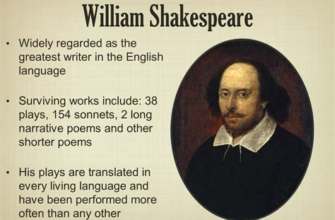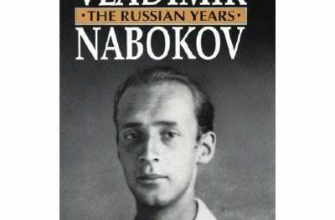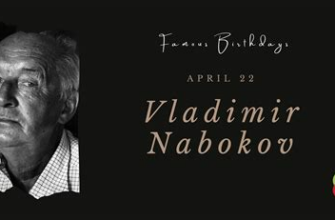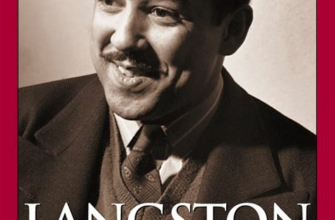In the realm of 20th-century literary brilliance, a name resonates with intellectual prowess and poetic prowess, elevating the realms of human expression to unprecedented heights. This scholarly voyage embarks upon the extraordinary saga encapsulating the profound intellect and creative mastery exuding from the enigmatic persona of T.S. Eliot.
Delving into the depths of human experience and contemplating the intricacies of existence, Eliot's oeuvre unveils a compelling tapestry of emotions and relentless exploration. His words, like an unyielding tempest, sweep the reader into a realm where the boundaries of reality and imagination blur, engrossing the senses with vivid imagery and profound insights.
With a pen dipped in the ethereal ink of brilliance, Eliot's poetic compositions transcend the mundane, breathing life into abstract concepts. Through a kaleidoscope of metaphors and symbols, he grapples with the complexities of love and loss, spirituality and disillusionment, rendering the intangible tangible, and the imperceptible within our grasp.
Drawing inspiration from diverse literary traditions and spiritual philosophies, Eliot's poetic landscape emerges as an exquisite mosaic. From the verses that meander through the streets of London in "The Waste Land" to the introspective symphonies found in "Four Quartets," his words resonate with an introspective potency that lingers long after the final line is read.
This captivating expedition unravels the enigma that is T.S. Eliot, shedding light on the myriad influences that shaped his genius and unraveling the poetic tapestry he wove. Embark on this intellectual odyssey, and immerse yourself in the life and artistry of a remarkable mind whose words continue to leave an indelible mark on the literary landscape.
S. Eliot: From Bank Clerk to Literary Icon
In this section, we delve into the remarkable journey of one of the most celebrated literary figures in history. From his humble beginnings as a bank clerk to his ascent to becoming a revered icon in the world of literature, we explore the transformative path traversed by S. Eliot.
Embarking on a career that saw him start off in the corporate world, S. Eliot's early life may seem worlds apart from the artistic realm for which he is renowned. Nevertheless, his transition from the structured atmosphere of banking to the realm of words and creativity showcases the unparalleled talent and unwavering determination that propelled him to literary greatness.
Through this exploration, we gain insight into the pivotal moments, influences, and experiences that shaped S. Eliot's unique voice and artistic vision. From the challenges he faced during his formative years to the profound impact of the cultural and intellectual circles in which he immersed himself, we unravel the layers of his artistic genius.
With a keen understanding of the significance of this transformative journey, we examine the intricate relationship between S. Eliot's personal growth and the evolution of his artistic expression. The struggles, triumphs, and revelations that he encountered along the way contribute to the depth and richness of his literary legacy.
From his early works that showcased his burgeoning talent to the masterpieces that solidified his reputation as a literary icon, we explore the key milestones in S. Eliot's artistic trajectory. By delving into the themes, techniques, and innovations present in his body of work, we uncover the brilliance and enduring relevance that characterize his writings.
Through the lens of S. Eliot's journey from a bank clerk to a literary icon, we gain a comprehensive understanding of the factors that shaped his artistry and continue to captivate readers worldwide. His legacy serves as an inspiration, reminding us of the transformative power of passion, persistence, and the pursuit of artistic excellence.
Influences on and Impact of T.S. Eliot's Creative Vision
Understanding the formative influences on an artist's work is crucial for unraveling the intricacies of their creative genius. T.S. Eliot's exceptional literary contributions were undoubtedly shaped by a diverse range of factors that played a pivotal role in shaping his artistic vision. Through the exploration of these influences, we can gain valuable insights into the factors that propelled Eliot towards his groundbreaking and distinctive style of writing.
1. Literary Tradition: Eliot's work was deeply influenced by the literary traditions that preceded him. Drawing inspiration from both classical and modernist schools of thought, he crafted a unique aesthetic that combined elements of tradition with avant-garde experimentation. By reimagining and redefining the conventions of poetry, Eliot revolutionized the way we perceive and engage with language.
2. Philosophical and Spiritual Explorations: Eliot's philosophical and spiritual inquiries also played a significant role in shaping his artistic sensibilities. From his exploration of Eastern philosophy and religion to his deep engagement with existential questions, Eliot embarked on a profound quest for meaning and purpose. These philosophical and spiritual influences infused his work with a richness and depth that continues to captivate readers to this day.
3. Personal Experiences: Like all artists, Eliot's personal experiences left an indelible mark on his creative output. From his tumultuous relationships and struggles with mental health to his experiences of war and societal upheaval, Eliot's life was rife with emotional and psychological complexities. These personal experiences provided him with a wealth of material and emotions to draw upon, resulting in works of staggering emotional intensity and profound introspection.
4. Collaborative Networks: Eliot was also greatly influenced by the artists and intellectuals he collaborated and engaged with throughout his career. From his association with the Bloomsbury Group to his relationships with fellow poets such as Ezra Pound, these collaborative networks provided Eliot with a fertile ground for the exchange of ideas and the refinement of his craft. These interactions not only shaped his own work but also helped shape the trajectory of modernist literature as a whole.
By delving into the diverse range of influences that governed T.S. Eliot's artistic journey, we can appreciate the complexity and nuance that underlies his unparalleled contributions to the world of literature. Understanding the impact of these influences allows us to perceive the artistic genius behind Eliot's works and further magnifies the enduring appeal of his literary legacy.
The Revolutionary Themes and Techniques in the Poetry of T.S. Eliot

In this section, we shall delve into the groundbreaking themes and innovative techniques that define T.S. Eliot's poetic genius. Eliot's works captivate readers with their profound exploration of the human condition, effortlessly navigating the complexities of modern life and thought.
One of the remarkable aspects of Eliot's poetry is his ability to delve into the depths of the human psyche, examining universal themes such as alienation, disillusionment, and the quest for meaning. Through his meticulous use of imagery, symbolism, and allusions, he expertly captures the fragmented nature of modern existence and the profound sense of spiritual emptiness that permeates society.
- Eliot's revolutionary use of multiple voices, disjointed narratives, and stream-of-consciousness techniques further reinforces his exploration of the disoriented nature of contemporary life. His poems often present a cacophony of voices, blending different perspectives and temporalities, mirroring the fragmented nature of human consciousness itself.
- Another key aspect of Eliot's poetic revolution lies in his incorporation of a rich interplay between different cultural traditions. By drawing from various literary, religious, and philosophical sources, Eliot breaks new ground by seamlessly blending these influences into his work, resulting in a unique and captivating fusion of ideas.
- Eliot's poetry also challenges traditional poetic forms, breaking away from conventional structure and embracing free verse, irregular rhythms, and unconventional rhyme schemes. This departure from tradition highlights his desire for artistic freedom and mirrors the chaotic and ever-changing nature of the modern world he sought to depict.
- Furthermore, Eliot's deep engagement with the spiritual realm in his poetry establishes him as a visionary of his time. His exploration of religious themes, from Christian theology to Eastern philosophies, resonates with readers and ignites a profound inner reflection, prompting audiences to question their own beliefs and confront the uncertainties of existence.
Overall, T.S. Eliot's poetry stands as a testament to his artistic innovation and visionary insight. Through his revolutionary themes and techniques, he offers a profound critique of modernity while also inspiring contemplation, challenging readers to explore the complexities of the human experience and the search for spiritual meaning.
FAQ
When was T.S. Eliot born and what were his early years like?
T.S. Eliot was born on September 26, 1888, in St. Louis, Missouri. His early years were marked by a strong academic focus and a passion for literature. He was an avid reader from a young age and excelled in his studies, eventually earning a scholarship to Harvard University.
What influenced T.S. Eliot's writing style?
T.S. Eliot's writing style was influenced by various factors. He drew inspiration from the works of French symbolist poets, as well as the metaphysical poets of the 17th century. He was also deeply influenced by his own personal experiences, including his religious conversion to Anglo-Catholicism and his disillusionment with post-World War I society.
What are some of T.S. Eliot's most famous works?
T.S. Eliot is best known for his poem "The Waste Land," which is considered one of the most influential works of modernist literature. Other notable works include "The Love Song of J. Alfred Prufrock," "Four Quartets," and his play "Murder in the Cathedral." These works showcase Eliot's mastery of language, his exploration of philosophical and spiritual themes, and his innovative approach to poetic structure.
How did T.S. Eliot's personal life impact his art?
T.S. Eliot's personal life had a significant impact on his art. His unhappy marriage and struggles with mental and emotional health influenced the themes of disillusionment and despair present in many of his works. Additionally, his religious conversion and deepening spirituality can be seen in his later works, which explore themes of faith, redemption, and the search for meaning.
What is T.S. Eliot's legacy in the literary world?
T.S. Eliot's legacy in the literary world is immense. He is regarded as one of the most important and influential poets of the 20th century. His works revolutionized poetry by challenging traditional forms and techniques, and his exploration of complex themes and fragmented narratives paved the way for future generations of writers. Eliot's contribution to modernist literature continues to inspire and intrigue readers and scholars alike.
What is the main focus of this biography about T.S. Eliot?
The main focus of this biography is to explore T.S. Eliot's artistic genius and provide a comprehensive understanding of his life and work.



